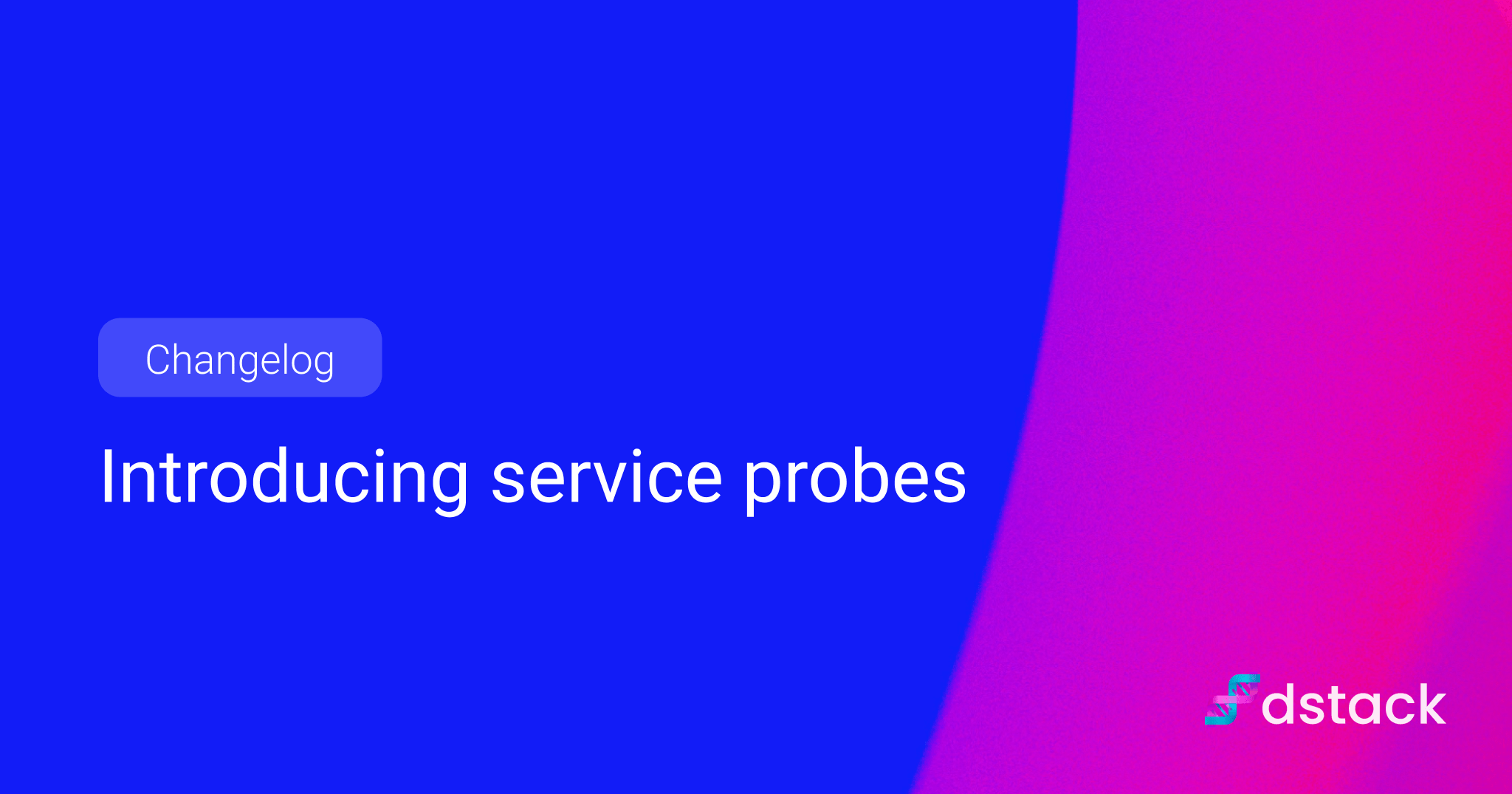Introducing service probes¶
dstack services are long-running workloads—most often inference endpoints and sometimes web apps—that run continuously on GPU or CPU instances. They can scale across replicas and support rolling deployments.
This release adds HTTP probes inspired by Kubernetes readiness probes. Probes periodically call an endpoint on each replica (for example, /health) to confirm it responds as expected. The result gives clear visibility into startup progress and, during rolling deployments, ensures traffic only shifts to a replacement replica after all configured probes have proven ready.

When a service starts, replicas may need time to load models and initialize dependencies. Without probes, a replica is considered ready as soon as the container starts. With probes, readiness is based on real responses.
Each probe sends an HTTP request to a configured endpoint at a set interval. A 2xx response counts as success.
Configuration¶
Probes can be set via the probes property in a service configuration:
type: service
name: llama31
python: 3.12
env:
- HF_TOKEN
commands:
- uv pip install vllm
- |
vllm serve meta-llama/Meta-Llama-3.1-8B-Instruct \
--max-model-len 4096 \
--tensor-parallel-size $DSTACK_GPUS_NUM
port: 8000
model: meta-llama/Meta-Llama-3.1-8B-Instruct
probes:
- type: http
url: /health
interval: 15s
replicas: 2
resources:
gpu: 24GB..48GB
In this example, dstack sends a GET /health request every 15 seconds to each replica.
Probe status¶
$ dstack ps --verbose
NAME BACKEND STATUS PROBES SUBMITTED
llama31 deployment=1 running 11 mins ago
replica=0 job=0 deployment=0 aws (us-west-2) running ✓ 11 mins ago
replica=1 job=0 deployment=1 aws (us-west-2) running × 1 min ago
In dstack ps --verbose, a replica shows × if the last probe failed, ~ while probes are succeeding but the ready_after threshold is not yet reached, and ✓ once the last ready_after checks have succeeded. Probes run for each replica while it is running.
Advanced configuration¶
Probes support custom HTTP methods, headers (with environment variable interpolation), request bodies, timeouts, and multiple checks in sequence. For example:
env:
- PROBES_API_KEY
probes:
- type: http
method: post
url: /check-health
headers:
- name: X-API-Key
value: ${{ env.PROBES_API_KEY }}
- name: Content-Type
value: application/json
body: '{"level": 2}'
timeout: 20s
Note: request bodies are not allowed with GET or HEAD methods.
Rolling deployments¶
During a rolling deployment, dstack starts a replacement replica, waits for it to be running and to pass its probes, then retires the old replica. This preserves availability while large models warm up.
Probes give you visibility about health of each replica. During rolling updates they gate traffic so new replicas receive requests after their checks pass.
See services and the reference for all options.
What's next?
- Check Quickstart
- Learn about services
- Join Discord